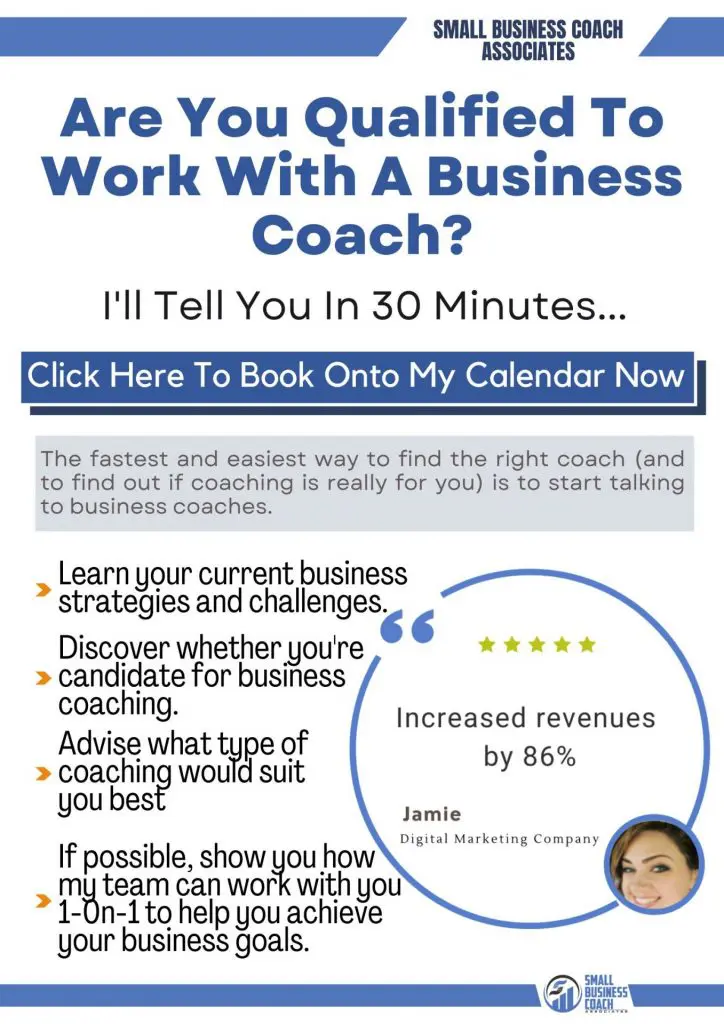Manage Time Like Money and Profit Through Time Management
Why did you get into business for yourself? Was it to be your own boss? Choose your own hours? Have more time with the family? Spend more time doing what you love? How do you manage your time? Chances are, you answered yes to all these questions.
These days, you probably wonder where the time went. Why you spent 12 hours at work and barely make a dent in your to-do list? We already know that time is a key resource for you and your business, but it’s also a key resource in your life. Harnessing and leveraging time is the only way to enjoy life, and have a profitable business at the same time.
A few years back I was working with a client who told me that he hadn’t had a date with his wife in years! He was running a million-dollar business with ten employees but he didn’t take any time off for himself. We were able to restructure the business that made him more profitable and he was able to get regular dates with his wife.
The Pareto Principle in Business

You may be familiar with the Pareto Principle; 80% of your results can be attributed to 20% of your efforts, while 20% of your results can be attributed to 80% of your efforts. As the leader of your business, you want to focus your efforts on the activities that yield the greatest results.
Most business owners carefully manage their financial and personnel resources, and pay due attention to their performance. Marketing plans and budgets are created, people are hired and fired. What most business owners don’t realize is that time – and the time of all employees – requires the same attention and diligent management.
Time will never manage itself.
Time is invaluable when you are running a business. That is why it is important to manage your time like money and profit through time management. Time will never manage itself. The decision to make a pro-active effort to manage your time must come from you. Once you have committed to taking ownership for your own time management, there are a host of tools available to you. But first, you must understand how much your time is actually worth, and where you are currently spending it.
What is Your Time Worth?
Ever wonder what your time is actually worth? Here’s a quick way to figure it out:
Target annual income A.
Working days in a year B. 235
Working hours in a day C. 7
Working hours in a year D. 1,645
A/D = YOUR HOURLY WORTH (before tax + expenses) E.
This is a very simple calculation intended to put your time in perspective. In reality, no one is productive for each of the 1,645 hours. Various studies have put actual productivity at anywhere between 25 minutes and four hours per day. Either way, there’s a lot of room for improvement.
How Many Days Do You Have Left on Earth?
Let’s look at it another way:
Your age A.
Days in a year B.
Days spent on earth to date (A x B) C.
Average life expectancy D. 70
Total projected days on earth (D x B) E.
Estimated days left (E – C) F.
This exercise isn’t intended to scare you, but bring your attention to the importance of choosing how you spend each hour you have available. It is a choice! By developing the skills required to manage your time, you will not only have a profitable business but rewarding and balanced life
Pro-Tip: Grab 30 minutes on my calendar to ask any questions you have about small business coaching. I’ve been a business coach (and business broker) for over 20 years. I also have a business coach of my own, so I know what successful coaching looks like on both sides of the table.
~ Alan Melton, Small Business Coach Associates
The Five Culprits of Time Theft
Chances are – if you’re like most people – you have no idea where your time goes. You’re likely frustrated by the fact that you can spend 10, 12, even 14 hours a day working, and not make a dent in your to-do list, or only bill half of those hours.
When we’re too busy and overloaded with work, we often switch into reactive mode. We can’t make it to the bottom of the pile and end up handling issues and making decisions at the last minute. One of the great benefits of choosing to become proactive in time management is that you can become proactive in all other areas of your business. When in a proactive mode, you can take steps to grow your business through networking, building programs, and establishing systems.
Before you investigate where your time goes, let’s take a look at the top five culprits of modern-day time theft:
1. Time Management and Your Email
Make profit through time management and managing your email. How many times a day do you check your email? Is Outlook or Mail constantly running on your desktop? Email – internal, external, personal and business – clogs up your day like no other communication channel. For many of us, it is possible to spend the entire day writing and responding to emails without even glancing at our inbox. The number of emails sent and received each day by the average person in 2007 was 147. Multiply that by an average of two minutes per message, and you have spent almost five hours on email in a single day.
2. Time Management and Your Mobile Phone
Cell phones have created convenience, security, and the luxury of telecommuting. PDAs and cell phones have also created a society that expects to be able to reach you at any moment or at least receive instant responses to their calls. Your cell phone or PDA not only robs you of your time during the day but also during the evenings and on weekends when you are not at work.
3. Time Management and Your Open Door Policy
If you make it easy for your staff and associates to interrupt you, they will. Too often, open-door policies are set up by human resource departments to create clear communication channels. Instead, they create a clog of employees lined up at your door seeking immediate answers to non-emergent issues.
4. Time Management in Meetings
You can profit through time management if we also manage our meetings well. How many times have you been to a meeting that was scheduled to be an hour, and ended up lasting three? How often do you attend unnecessary meetings? Or meetings that run off-topic? Meetings can be a huge source of wasted time – your valuable time that is why it is important to manage your time. In a senior management or ownership position, your day may consist of back-to-back meetings, leaving only your evening hours to complete the tasks that should have been done during the day.
5. Time Management: YOU!
Every person has daily habits that sabotage their ability to work productively and efficiently. Many entrepreneurs and business owners can’t separate business hours from leisure hours. Some get caught in a time warp while surfing the internet. Others – mainly overachievers – can become paralyzed by perfectionism or procrastination. Mainly we just don’t have the tools to schedule and structure our time in a way that fits with our working style.
Where Does Your Time Go?
So far we’ve seen that time is a resource that should be as carefully managed as cash, we’ve figured out what your time is worth, and looked at the top five culprits of time theft. You’ve committed to taking steps to become a better time manager. What now?

Personal Time Management Research Exercise
The next step is to take a good, (and honest!) look at how you spend your time. Once you understand your patterns and habits, you begin to implement the strategies in this chapter that will make you manage your time better.
Step One: Time Audit
Use the Time Log Worksheet at the back of this chapter to record how you spend your time for three working days in a row. Be honest, and be specific. Include time spent in transit, surfing the web, interacting with clients and colleagues, as well as how your time is spent at home in the evenings. The more information you can record, the easier it will be to analyze your time management skills in step two.
Step Two: Time Categorization
Once you have recorded your time for three days, sit down with all three sheets in front of you and identify the following using different colored markers or highlighters:
- Driving, public transportation or other travel
- Eating, including food preparation
- Personal Errands
- Exercise
- Watching TV
- Sleeping, including naps
- Using the computer, personal use only
- Being with family/friends
- Emailing, including checking, reading, and returning messages
- Talking on the phone, including checking and returning messages
- Internal meetings
- External meetings
- Administrative work
- Client work
- Non-client, non-administrative work
Step Three: Time Analysis
Now that you have identified how you have spent your time, go through the worksheets one more time and identify if you have spent enough, too much, or too little time on each main task.
Then, based on your observations, answer the following questions: Download the Template Here
- What patterns do you notice about how you spend your time during the day? (i.e., When are you most productive? Least productive? Most or least interrupted?)
_______________________________________________________________________________________________________________ _______________________________________________________________________________________________________________
- Write down the four highest priorities in your life right now. Does your timesheet reflect these priorities?
_______________________________________________________________________________________________________________ _______________________________________________________________________________________________________________
- If you had more time, what would you do?
_______________________________________________________________________________________________________________ _______________________________________________________________________________________________________________
- If you had less time, what wouldn’t you do?
_______________________________________________________________________________________________________________ _______________________________________________________________________________________________________________
- Could you remove the items in question four and add the items in question three? Why or why not?
_______________________________________________________________________________________________________________ _______________________________________________________________________________________________________________
- Is procrastination a problem for you? How much?
_______________________________________________________________________________________________________________ _______________________________________________________________________________________________________________
Strategies for Profitable Time Management
There are many ways to curb time theft and refine your time management ability for you to manage your time well. Through a solid understanding of how you currently spend – and waste – time, you can determine which strategies you need to implement to correct unproductive behavior.
Here are 17 ways you can turn less of your time into more money:
1. Set Clear Priorities
The foundation of time management is a clear understanding of what your time is best spent on. Once you accept that you can’t do everything, you need to decide what needs to be completed now, what can be completed later, and what someone else can complete in this way you can manage your time effectively. Each to-do list you create should be put through this filter, and reorganized so the highest priority items are on top, and the lowest priority items are less visible, or on the bottom.
Once you have established your priorities – which will also naturally reflect the priorities and goals of your business – stick to them. Just because someone else feels something is of a high priority doesn’t mean it holds the same status next to your other tasks.
Prioritization is also helpful in your personal life and leisure time. Your spare time is precious – so make sure are clear on how you would like to spend it.
2. Use Your Skills – Delegate Your Weaknesses
As a business owner, your day naturally consists of tasks you dislike doing. Some are essential – signing checks, reviewing financial statements, and other business maintenance – while others are simply not within your skill set.
If you are a strong public speaker but struggle with report writing – delegate to a copywriter or editor. If you own a retail store and have no experience in design – outsource your signage. These freelance professionals often cost half as much as you and take half as long to complete the task. It is a great idea, especially if you struggle with time management. Your time is saved for tasks that use and strengthen your skills effectively, your stress is managed, and ultimately a better product is produced. Delegating your weaknesses or tasks that can be delegated to your team is one of the best strategies for you to manage your time effectively.
3. Delegate, Delegate, Delegate
As a small business owner, the only way you will ever get everything done is by delegating. Delegation is a vital skill that needs to be refined and practiced, and once mastered is the key to profitable time management.

Too often, owners and managers believe that it will be “faster” or “more efficient” to complete the task themselves than to train and monitor someone else. Other times, there are no internal resources to download assignments.
As a result, the following trends can be seen in many small companies:
- Owners and senior staff are stressed and overworked, while junior staff is underutilized and under capacity.
- Staff members are not given an opportunity to grow and develop in their roles and may perceive a lack of trust or confidence in their ability. The company loses good people.
- Owners and senior staff are always in a reactive state, instead of a visionary or proactive state.
- Delegation happens at the very last minute, and junior staff has little understanding of either the overall project or expectations for the task.
The easiest way to fix this problem is before it starts. Create a solid team of staff members around you who are well-trained and prepared to support the business. Attract and retain qualified and quality people who can be cross-trained and promoted within the company. Ensure that communication flows throughout the business, so everyone has the product and service knowledge to step in and assist when necessary.
4. Learn to Say “No”
It’s easy to fall into the habit of saying yes to everything. You are, after all the business owner, right? No one can complete these tasks as well as you, right? You’ll lose that customer if you don’t help them with their garage sale, right?
Wrong. The most successful business owners have a keen understanding of time management and delegate the remaining responsibilities to trusted others. It’s too easy to say yes to every request in the moment, and later feel overwhelmed when it’s added to your to-do list. You may not ruffle any feathers, but what toll does it take on your stress level? Your workload? Your time is valuable – so manage your time well and protect it!
Remember that if it is too challenging to say no immediately, you can always request some time to think about it. This way, you can evaluate your workload and realistically decide whether or not you can take on a new project. Then, stand by your decision, or assist in bringing in the necessary resources to get it done.
5. Create (and keep!) a Strict Schedule
While multi-tasking is a desirable skill, it is also often a time thief. Attempting to do too many things at one time ensures that nothing gets done. As a business owner, you need to be able to focus and concentrate on essential projects without interruptions.
The only way to do this is to commit to a strict schedule. Once you understand your work style and concentration patterns, you can allocate periods of the day to specific tasks. This includes personal and leisure time – schedule it, and stick to it.
Doing a time management by creating a schedule time for list-creation + prioritization, email messages, telephone messages, internal meetings, client meetings, meeting preparation, “me-time”, family time, recreation + fitness, daily business tasks, and blocks for focused work.
Remember that there is a training period involved in beginning a new routine – for yourself and those around you. Use your voicemail, out-of-office email message, and a closed-door to begin to let people know when you will not be disturbed.

6. Make Decisions
The choice to not make a decision is a decision in itself. The most successful business owners have the ability to make good decisions quickly and efficiently and do not waste time deliberating over simple choices.
In leadership positions, often people are afraid of making the wrong decision or looking foolish if they make a mistake in front of junior staff. What they don’t realize, is that hesitating or avoiding decision-making impacts their leadership just as much or more than making the wrong decision. Not only can being indecisive be personally stressful, but it is also stressful for those around you whose tasks are waiting on your choices.
Remember, you must make the best decision with the information you have, in the time frame you have to make the decision. No one expects you to be a fortune teller – be decisive, make some mistakes, and learn from them.
7. Manage Telephone Interruptions
This is a huge source of time theft that can easily be managed and avoided. If you are available to take phone calls at any time of day, you are setting yourself up to take work home in the evenings. The phone will always ring when you are focused on an important task, and this is something that can easily be avoided.
Figure out when you are most productive. Is it in the morning or the afternoon? Before, during, or after lunch? Once you have identified this time period, set your phone on “do not disturb” or have your calls directed to voicemail. If you do not have a receptionist, a variety of automatic answering systems are available for a nominal fee. To structure your phone time further, let callers know on your voicemail what specific time of day is best to reach you via phone. Then, set that time aside to receive and return phone calls.
8. Keep Your Work Environment Organized
Have you ever tried to make dinner in a messy kitchen? More of your time is spent looking for (and cleaning) dishes and tools than actually spent cooking the meal.
The same goes for your work environment. If your desk and office is in a constant state of chaos, then your mind will be too. In fact, some studies have revealed that the average senior business leader spends nearly four weeks each year navigating through messy or cluttered desks, looking for lost information. Does that sound like a productive time for you?
Once you make the initial clean sweep, it’s easy to maintain order in the chaos:
- Tidy your desk at the beginning and end of each day. Attach pertinent documents to your to-do list, or have clear and organized folders for loose papers.
- Organize your supplies drawer so you have easy access to stationery like pens, post-it notes, staplers, and highlighters. Every minute counts!
- Only have the documents and files you are working on, on your desk. The rest should be neatly filed on a side table for later retrieval.
- Keep personal items (like photos or memorabilia) out of your primary line of vision. These can be distracting and encourage daydreaming.

As for your office or store, there are many ways to make its layout more conducive to effective time management. Try:
- Minimizing the distance between the reception desk and electronics like photocopies and fax machines.
- Keep a clear line of sight between your office and the most productive area of your business, so you are aware of what is happening amongst your staff.
- Organize shelves and filing cabinets so files are not only easily accessed, but out of sight when not being used. Consider putting sliding doors or cabinets in storage areas, and remember that the floor is not a storage cabinet.
9. Keep Your Filing System Organized
If your data isn’t organized properly, you will waste hundreds of hours searching for documents you need on a regular basis. This includes both electronic and hard copy files; they need to be organized and up-to-date.
Customer databases and inquiry records are worth their weight in gold. You can’t afford to get behind when updating this information, or poorly store it for later retrieval. There are many easy to use software programs that will manage and organize customer databases for you; it doesn’t need to be a time consuming or tedious exercise.
A simple way to manage information is to keep it in short, medium, and long term files for both hard and electronic copies. Create shortcuts on your desktop for folders or files you constantly access. Have short-term files available on your desk, medium-term files available within an arm’s reach, and long-term files stored in cabinets.
10. Clearly Communicate – Never Assume
One of the biggest issues for time management in business – and likely the world – is miscommunication. This is a dangerous issue that can cripple any business, including yours. Establishing and enforcing clear policies on things like accurate note-taking, task assignments, and phone messages will ensure your staff understands the importance of clear and accurate communication.
The easiest habit to start to curb miscommunication is simple: write everything down. Carry a notepad, and jot down key points, figures, agreements, and deadlines. Don’t assume you’ll remember later – you have at least a hundred other things to remember.
Some other simple strategies are:
- Return all communication promptly, including email, letters, faxes and phone calls
- Repeat back phone messages, phone numbers, and other figures to confirm you recorded the information correctly.
- Record appointments in your PDA or agenda the moment you make them. Otherwise, you will forget.
- Double-check and confirm everything – addresses, phone numbers, meeting locations and times.
- Maintain accurate customer contact logs with dates, times, and phone numbers.
- Post checklists in your store or office for routine operations procedures.
- Announce any changes to the policies and procedures manual immediately.
11. Stop Duplicating Efforts
This is a key element of time management that is closely related to effective communication. Studies have continually shown that many businesses often duplicate and triplicate efforts that need only be completed once.
When you have clear systems and procedures in place, your staff will not need to “reinvent the wheel” each time the task needs to be completed. Meeting minutes and individual task assignments will ensure everyone is on the same page and understands their personal responsibilities.
Simple examples of this include re-reading your to-do list each hour to determine what the next important item is. If your list is already structured by priority, this is a needless task. If two staff members are working on similar projects, but unaware of the other, the work will not only be inconsistent, but the efforts will be duplicated. These are easy problems to fix, once they have been identified and communicated.

12. Say Goodbye to Procrastination + Perfectionism
If you want to manage your time effectively, then, procrastination is something you need to get rid of. We all face procastination at one time or another – and likely have since our school days. However, given the pace that the world operates at today, you will only fall behind your competitor if you allow procrastination to rule your day. So how you do avoid it? It’s simple. Stop, and just get started, no matter how boring, tedious, or painful the project may be. Reward yourself by crossing each step off your to-do list.
Many small business owners also fall victim to perfectionism, which can be paralyzing. The fear that there isn’t enough time or resources to “get it perfect” will sometimes stop you dead in your tracks. Perfectionism can also hinder your ability to delegate and say no to tasks you believe no one else can complete “better”. Do the best you can with the time and resources you have – and just get started.
13. Avoid Needless, Impromptu + Unstructured Meetings
This may seem like a time theft issue that is out of your control, but it’s not. You are in control of your own time and able to manage your time, and through strict scheduling can establish a structure for internal and external meetings that everyone around you can work within.
Minimize impromptu internal meetings by letting your staff know when you’re available for a “quick chat” and when you are not. If it is important, ask them to schedule a time to meet with you that works with both of your schedules. This not only saves you time, but encourages staff to find solutions to their own issues, and only approach you with more urgent or challenging matters.
You can’t avoid having meetings, but you can avoid having unstructured meetings. Ask for or create an agenda for each meeting you attend, with a clear objective and an amount of time allocated to each item. This will keep your meetings focused and on task. If a meeting does run late, give yourself a reasonable buffer, and politely leave for your next appointment. You can always follow up with a colleague to catch-up on the pertinent items you may have missed.
14. Establish Clear Policies + Procedures
A clear policy and procedures manual is like a marketing or business plan – it takes time to create, but ultimately saves everyone in your company time, money, and effort. A step-by-step guide to “the way we do things here” is an invaluable resource for your existing and new staff, and provides clear expectations for how you like things done.
Too many businesses make up policies and procedures on the fly – creating dangerous scenarios where mistakes are made and expectations are not clear. Some items that should be included in a comprehensive policy and procedures manual include:
- Recruitment
- Customer relations
- Customer inquiries
- Customer complaints
- Returns
- Exchanges
- Late Payments
- Salary structure
- Bonus structure
- Employee review
- Theft
- Harassment
15. Keep the Right Set of Tools
The equipment your business needs to operate (and grow!) effectively should always be on hand, or easily contracted out. This is specific to each company, and closely related to costs – including the cost of your time.
Whether you are a high-tech business or local retailer, knowledge of the latest advancements in technology will increase your efficiency. It will help you stay on top of the competitor, maintain your position as an expert, and perhaps provide an easier way of getting things done.
Always ask yourself if these purchases are essential to your business –could you perhaps make these purchases from a second-hand dealer to minimize cost? Is it more cost-effective to outsource or sub-contract the tasks to someone with access to this equipment, or to buy the equipment yourself?
If your business relies on tools and technology for daily tasks (such as the trade profession) then obtaining the best quality you can afford is crucial.
16. Maintain Your Equipment
This may seem obvious, but you’ll understand the importance of your network server has ever crashed, or point of sale system has malfunctioned. Your business can be slowed to a stand-still if your equipment is not in good working order. Of course, there are instances that can’t be predicted, but regular maintenance of your essential equipment will reduce these occurrences and help to anticipate when old equipment needs to be repaired or replaced.
Personal Time Management Strategy
Choose one from the top five tips that you think will help you the most, given your personal time management study. This time management study will help you finish all your important tasks and appointments on time. Write them below, with three corresponding actions that you will start tomorrow. For example, if you are going to set a strict schedule, three actions might be to establish the schedule, communicate it to your staff, and re-record your voicemail message. Download the Template Here
1.
a._______________________________________________________
b._______________________________________________________
c._______________________________________________________
2.
a._______________________________________________________
b._______________________________________________________
c._______________________________________________________
3.
a._______________________________________________________
b._______________________________________________________
c._______________________________________________________
4.
a._______________________________________________________
b._______________________________________________________
c._______________________________________________________
5.
a._______________________________________________________
b._______________________________________________________
c._______________________________________________________
Timesheet | Day Three Download the Template Here
| Timeslot |
Activities |
More/Less/Enough time? |
| 7:30 – 8:00 |
|
|
| 8:00 – 8:30 |
|
|
| 8:30 – 9:00 |
|
|
| 9:00 – 9:30 |
|
|
| 10:00 – 10:30 |
|
|
| 10:30 – 11:00 |
|
|
| 11:00 – 11:30 |
|
|
| 11:00 – 11:30 |
|
|
| 11:30 – 12:00 |
|
|
| 12:00 – 12:30 |
|
|
| 12:30 – 1:00 |
|
|
| 1:00 – 1:30 |
|
|
| 1:30 – 2:00 |
|
|
| 2:00 – 2:30 |
|
|
| 2:30 – 3:00 |
|
|
| 3:00 – 3:30 |
|
|
| 3:30 – 4:00 |
|
|
| 4:00 – 4:30 |
|
|
| 4:30 – 5:00 |
|
|
| 5:00 – 5:30 |
|
|
| 5:30 – 6:00 |
|
|
| 6:00 – 10:00
(Evening) |
|
|
| Task |
Priority (1-10) |
Deadline |
Delegation? |
|
|
|
|
|
|
|
|
|
|
|
|
|
|
|
|
|
|
|
|
|
|
|
|
|
|
|
|
|
|
|
|
|
|
|
|
|
|
|
|
Weekly To-Do List | Personal (Family, Leisure, etc.) Download the Template Here
| Task |
Priority (1-10) |
Deadline |
Delegation? |
|
|
|
|
|
|
|
|
|
|
|
|
|
|
|
|
|
|
|
|
|
|
|
|
|
|
|
|
|
|
|
|
|
|
|
|
|
|
|
|
There you have it, then. I hope this post will help you manage your time so you can attain the results you were hoping for.
Do you need help taking action on all this information? Then book a free call with one of our small business coaches today.











































